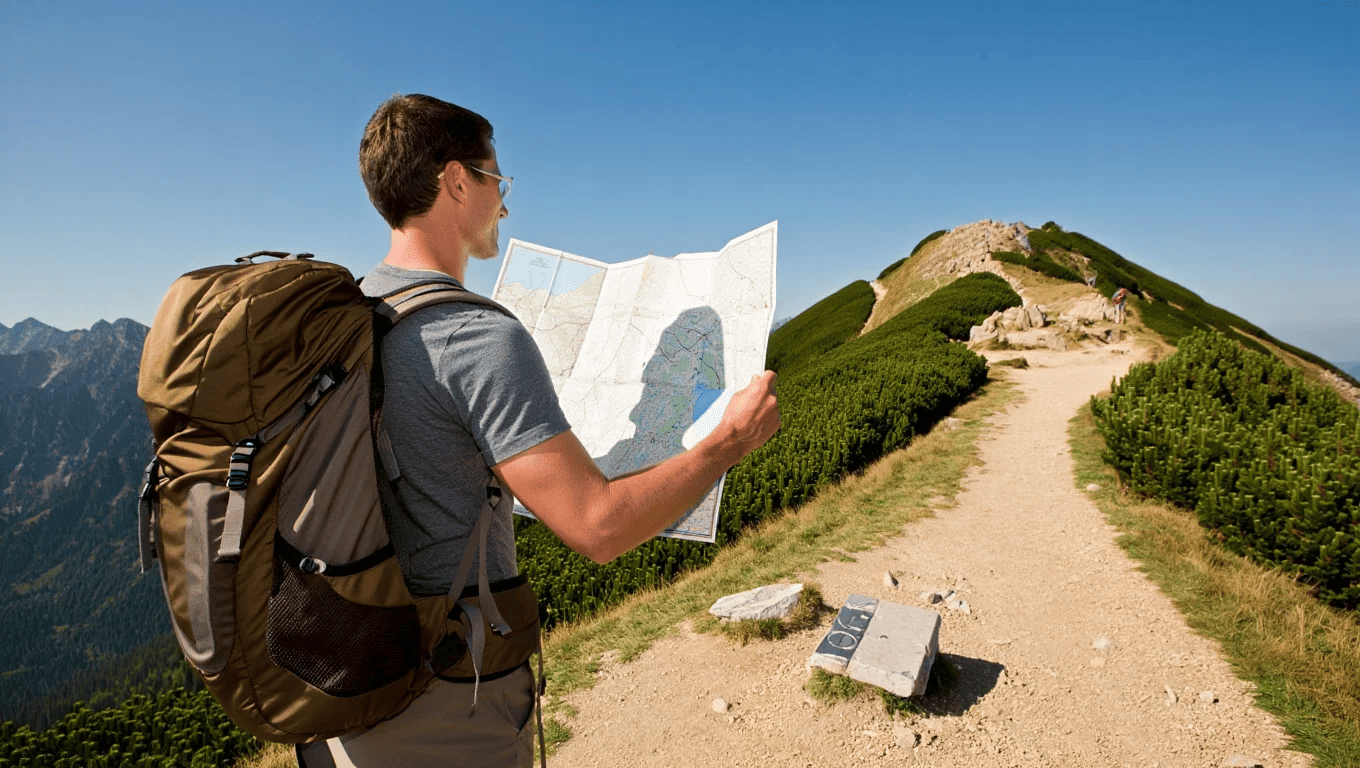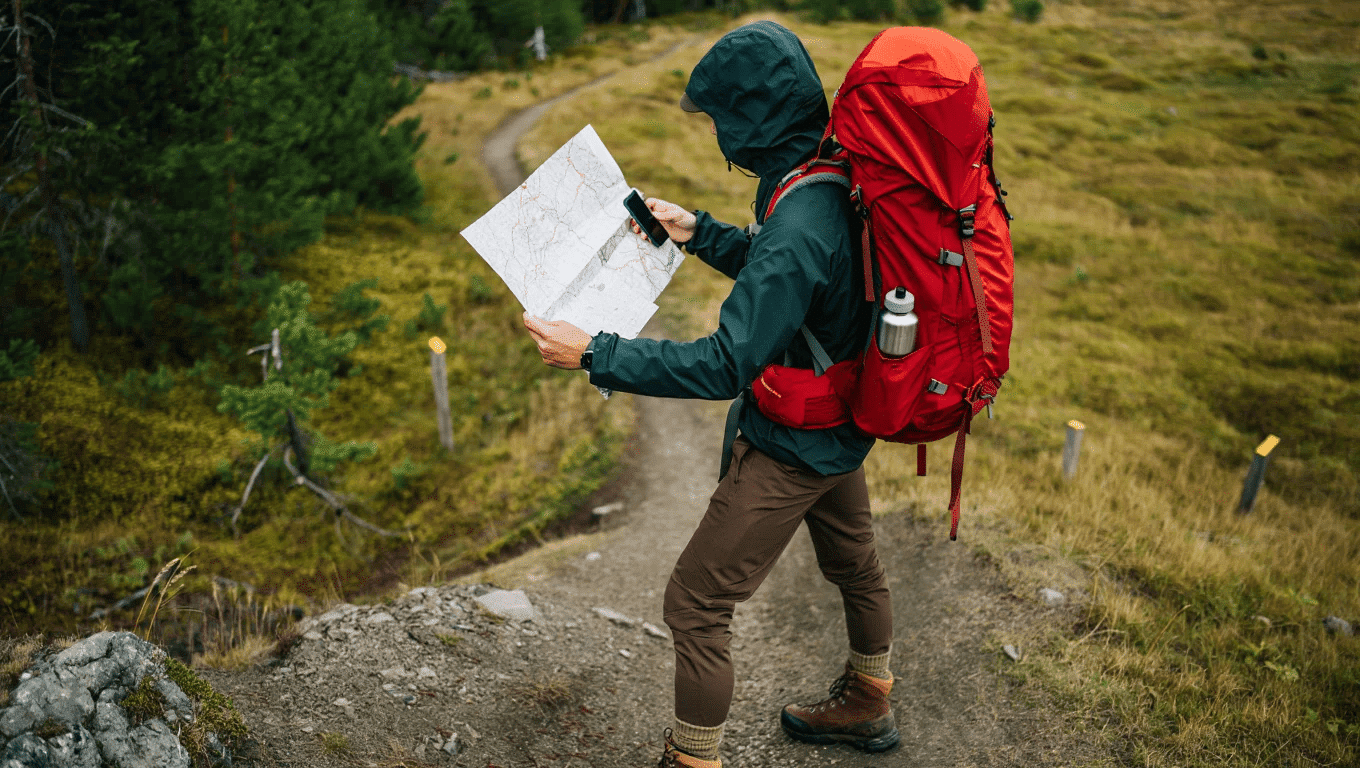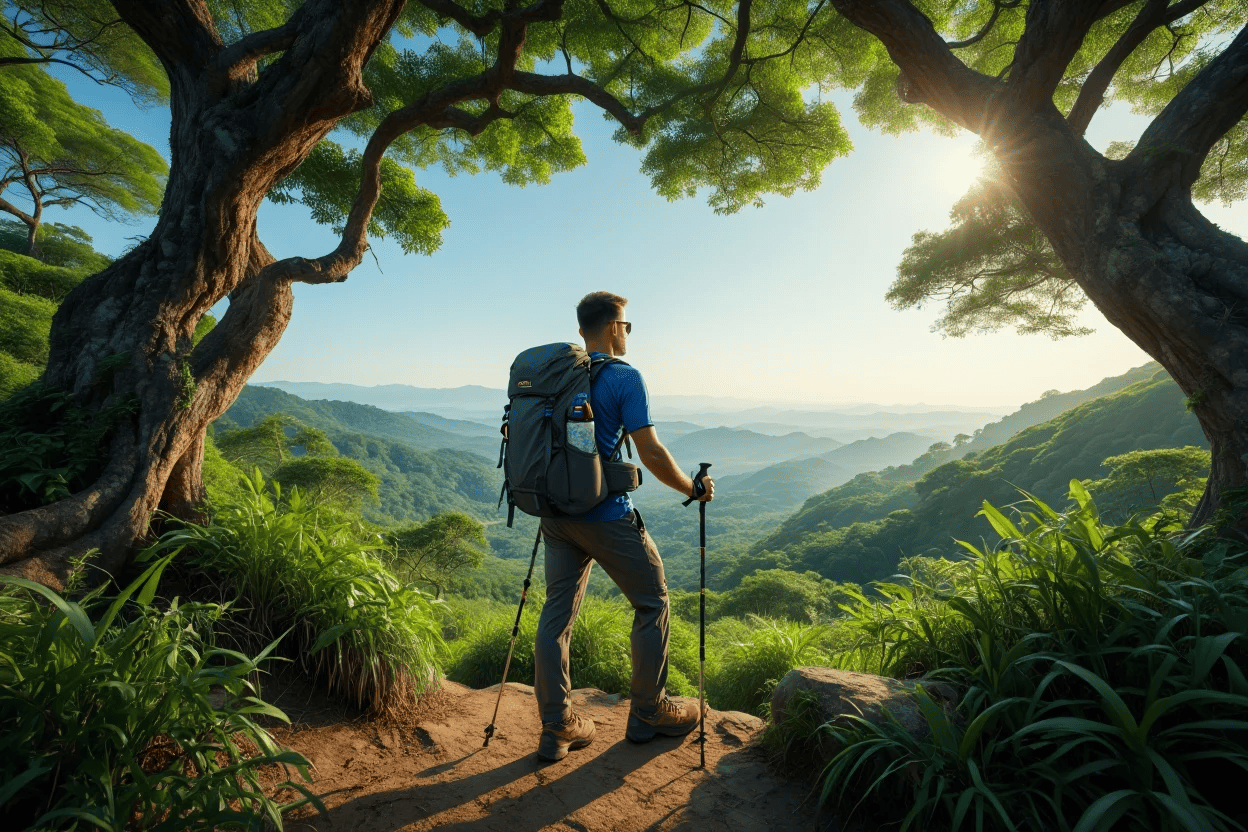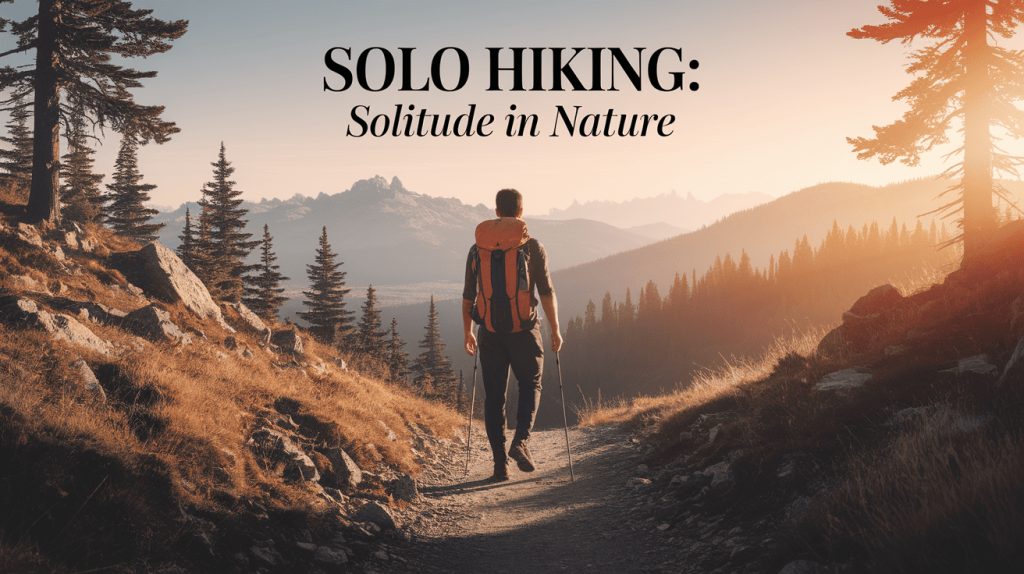Ever wondered what it feels like to stand alone on a mountain peak, with nothing but the whisper of wind and distant bird calls for company?
Solo hiking offers this rare blend of freedom, challenge, and quiet reflection that can’t be found anywhere else. Stepping onto a trail by yourself opens up a world where you set the pace, choose the path, and find strengths you never knew you had.
Many hikers hesitate to venture out alone, worrying about safety or loneliness. Yet those who take that first solo step often find it becomes their preferred way to experience nature.
As trail networks expand and navigation tools improve, solo hiking has become more accessible than ever. Ready to lace up your boots and find what awaits when it’s just you and the trail?
What is Solo Hiking?
Solo hiking is the practice of hitting the trails alone, rather than with companions or organized groups. When you hike solo, you experience nature on your own terms – setting your own pace, choosing when to rest, and deciding which paths to explore without compromise.
Many hikers are drawn to the solitude that comes with traveling alone, finding peace in the quiet moments that allow for deeper reflection and connection with natural surroundings.
Others value the self-reliance that solo hiking demands, as it builds confidence and problem-solving skills when you have only yourself to depend on.
The personal growth aspect is equally compelling – facing challenges alone, overcoming fears, and realizing inner strength that might remain untapped in group settings.
Solo hiking offers a unique blend of freedom, challenge, and personal growth that continues to attract outdoor enthusiasts worldwide.
Benefits of Solo Hiking
Hiking alone offers powerful rewards beyond just time outdoors. Solo hikes give you space to clear your head while building both physical and mental strength.
You learn to trust yourself more when facing challenges on your own. Nature becomes a teacher and friend when you experience it at your own pace.
Without companions to distract you, your senses become heightened – you notice subtle sounds of wildlife, changing light patterns through the trees, and small details that might otherwise be missed.
This deeper connection to your surroundings often leads to profound moments of clarity and perspective that can’t be found in daily life.
Many solo hikers also encounter an unexpected benefit: the authentic conversations and meaningful connections they form with fellow travelers they meet along the trail.
1. Mental Health Benefits

Taking solo hikes helps calm your mind after busy days at work or school. When you walk alone in nature, your thoughts slow down and stress melts away.
Many hikers report feeling refreshed and more focused after spending time on trails by themselves.
The quiet setting lets you process your thoughts without interruption. This natural form of mindfulness helps boost your mood and can even help with anxiety.
2. Self-Reliance and Confidence

When you hike alone, every decision rests on your shoulders. You learn to trust your instincts about which path to take or when to turn back.
Solving trail problems builds confidence that extends to everyday life challenges.
Each solo travel adds to your mental toolkit of skills. The feeling of accomplishment after completing a trail on your own creates a lasting sense of capability.
3. Deep Connection with Nature

Without conversation or phone notifications, you notice more of the world around you. The sounds of birds, rustling leaves, and flowing water become your companions.
You spot wildlife more often when hiking alone because you move more quietly through their habitat. Colors seem brighter and smells more vivid when you give them your full attention.
This deeper awareness creates a special bond with natural spaces that stays with you.
4. Physical Health Benefits

Solo hiking gives your body a complete workout without the feeling of exercising. Your leg muscles strengthen while your heart and lungs improve with each uphill section.
Regular hiking helps maintain a healthy weight and improves balance skills.
The varied terrain challenges different muscle groups more than flat walking paths. Being outdoors also exposes you to vitamin D from sunlight, which supports bone health and immune function.
Is Solo Hiking Safe?

Solo hiking can be safe when you take the right precautions. Many people worry about getting lost, injured, or encountering dangerous wildlife when hiking alone, but proper preparation minimizes these risks.
Before heading out, research your trail thoroughly and pick routes that match your skill level and experience.
Always inform a trusted friend or family member about where you’re going and when you expect to return – this is your safety net if something goes wrong.
Pack essential navigation tools like a detailed map, compass, and a fully charged GPS device or phone with offline maps. Dress appropriately for the weather and carry enough water, food, and emergency supplies.
Pay attention to your surroundings and trust your gut feelings – if a trail seems unsafe or weather conditions change suddenly, don’t hesitate to turn back.
Knowing your physical limits is crucial; challenging yourself is beneficial, but pushing too far beyond your abilities can lead to dangerous situations.
How to Prepare for a Solo Hiking Trip

Planning is the key to a successful solo hiking adventure. Good preparation helps you avoid common problems and enjoy your time on the trail.
Take time to research and train before heading out alone. A well-prepared hiker is a confident and safe hiker, especially when traveling solo.
Researching Trails
Picking the right trail is crucial for a good solo hiking experience. Start by checking official park websites or hiking apps for trail information, including distance, height gain, and difficulty ratings.
Look for recent reviews from other hikers to learn about current trail conditions or closures. Consider the season and weather forecast when making your choice.
For your first solo hikes, select well-marked, moderately busy trails rather than remote or technically challenging routes. Match the trail difficulty to your experience level and physical condition to ensure an enjoyable experience.
Physical Preparation
Your body needs to be ready for the demands of solo hiking. Start a training routine several weeks before your planned hike with regular walking, stair climbing, or hill training.
Gradually increase the distance and difficulty of your practice hikes while wearing the backpack you’ll use on your trip. Pay attention to how your body responds to different terrains and weather conditions.
Solo hikers need extra fitness reserves since there’s no one to help carry gear if you get tired. Remember that mental stamina is just as important as physical strength – practice hiking alone in safe areas to build your confidence.
Solo Hiking Gear Essentials
Packing the right gear is crucial for a safe and enjoyable solo hiking experience. The right equipment helps you handle unexpected situations when no one else is around to help.
You don’t need fancy or expensive gear to start, but some basics are essential.
| CATEGORY | KEY ITEMS | WHY IT MATTERS |
|---|---|---|
| Backpack | Daypack (20-35L) or Multi-day pack (40- 65L) | Carries essentials comfortably |
| Footwear | Hiking boots/trail runners; Extra socks | Prevents blisters; provides support and traction |
| Clothing | Base, mid, and outer layers; Hat | Adapts to changing weather |
| Tech Gear | GPS/Phone with offline maps; Headlamp | Prevents getting lost; enables emergency contact |
| Safety Items | First aid kit, Whistle, Multi-tool, Emergency shelter | Enables self-reliance in emergencies |
Pro Tip: Break in new boots before long hikes; always carry rain protection regardless of forecast; download maps before departure; keep phone in airplane mode to save battery; learn basic first aid; remember that three whistle blasts are the universal distress signal.
Tips for Solo Hiking Success

Solo hiking becomes easier and more enjoyable with a few key strategies in mind. These simple approaches can make a big difference in your hiking experience.
Even experienced hikers use these techniques to stay safe and have fun. A successful solo hike depends on both preparation and your mindset during the trip.
- Maintain a positive, flexible attitude while setting a sustainable pace that works for your entire hike.
- Check weather and trail conditions immediately before your trip and inform someone of your route and return time.
- Take regular breaks to rest, refuel, and appreciate the natural surroundings.
- Familiarize yourself with navigation tools before your hike so you’re prepared for unexpected situations.
- Find the right balance between using technology for safety and disconnecting to fully experience nature.
Remember that solo hiking gets better with practice, just like any other skill. Each hike teaches you something new about yourself and the outdoors.
Most problems on the trail have simple solutions if you stay calm and think clearly. The freedom and personal growth that come from hiking alone make all the preparation worthwhile.
Final Thoughts
Solo hiking converts ordinary walks into extraordinary experiences of personal growth and natural connection. The trails you travel alone leave footprints not just on the earth, but on your sense of capability and confidence.
Each solo hike builds skills that extend far beyond the wilderness—problem-solving, decision-making, and inner calm that serve you in everyday life.
The solitude found on remote paths provides a rare mental clarity, often drowned out by our noisy world. While group hikes have their place, there’s something irreplaceable about moving through forests and mountains at your own rhythm, on your own terms.
So grab your map, pack those essentials, and give yourself the gift of solo trail time. The wilderness has lessons to teach that can only be heard when you’re brave enough to listen alone.
Follow along for new updates on travel tips, best places to visit, and unforgettable experiences.




